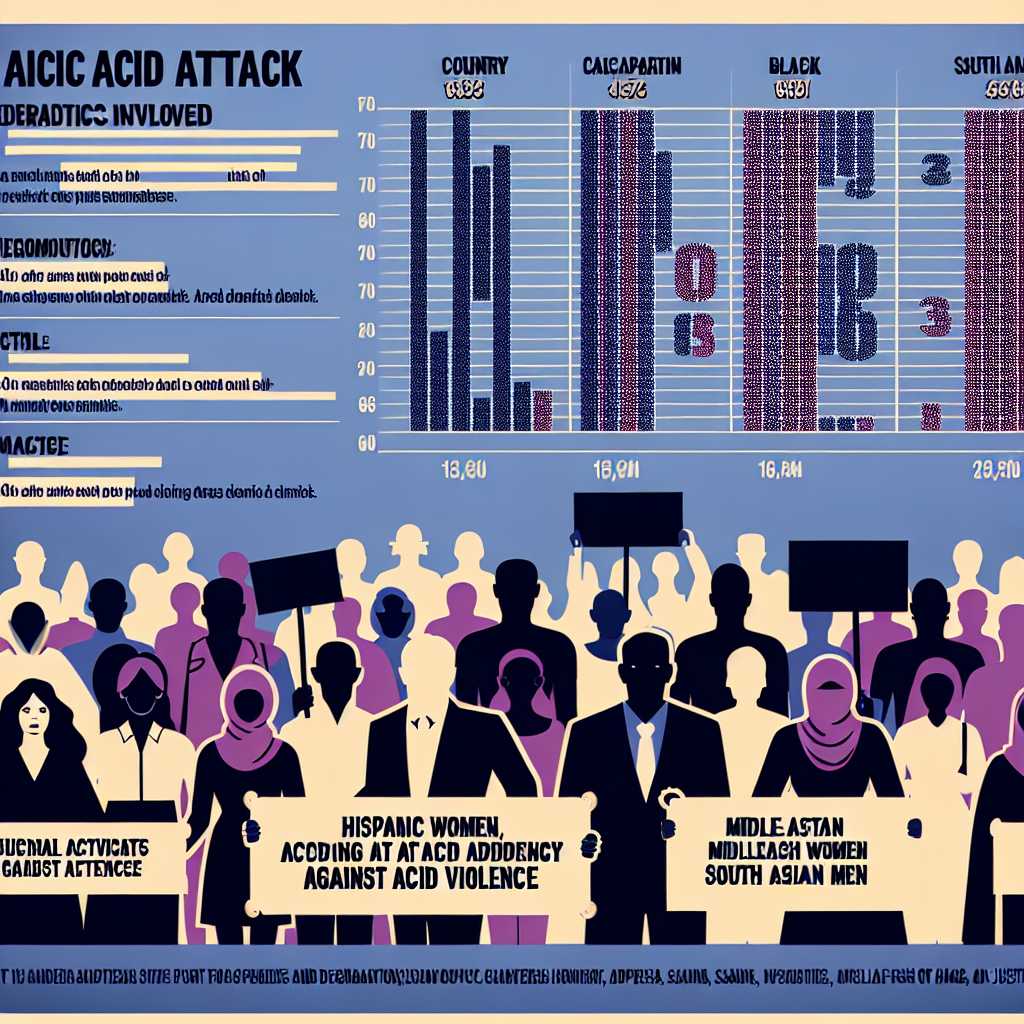Understanding Acid Attacks: A Global Phenomenon with Devastating Impact
Introduction to Acid Attacks
Acid attacks, a form of violent assault, are among the most brutal and inhumane acts perpetrated against individuals. In an acid attack, the perpetrator throws corrosive acid at the victim’s body with the intention of maiming, disfiguring, or even killing them. These attacks can result in long-term physical and psychological effects and are considered a violation of human rights. Acid attacks occur across the world, but the reasons, frequency, and demographic distribution can vary markedly by region.
Historical Context and Prevalence of Acid Violence
Acid attacks have been reported for several decades, though their prevalence and visibility have fluctuated over time and by location. In some countries, particularly in South Asia, acid violence is more prevalent and has received significant media attention due to the horrific nature of these crimes and the educational and advocacy campaigns conducted by various NGOs. However, particularly certain nations like Bangladesh, India, Pakistan, Colombia, and Uganda report higher cases.
Such attacks are often gendered, with a significant proportion directed at women and girls as a form of control or punishment. These crimes are linked to domestic disputes, marital issues including dowry demands, rejection of marriage or intimacy proposals among other social and cultural conflicts.
The Science Behind Acid Attacks: Understanding the Chemicals Used
The corrosive substances used in acid attacks are typically strong acids, such as sulfuric acid or hydrochloric acid which cause immediate chemical burns upon contact with skin. The severity depends on the concentration of the acid and duration before neutralization or treatment. These substances react with skin tissue inside out leading to severe disfigurement or even organ function loss if thrown on sensitive organs such as eyes.
Besides acids, there are instances where other corrosive substances like alkaline solutions have been employed for similar destructive intentions inflicting burns or injuries similar to acid burns.
Legal Frameworks Addressing Acid Violence
The legal response to acid violence varies globally, which shapes both the prevalence of attacks and justice for survivors. In recent years, there have been significant legislative efforts in countries with high incidences to curb these incidents through stricter penalties for perpetrators and regulation of corrosive substance sales.
For instance, legislation in England gave police greater powers to prevent acid attacks by restricting sales and carrying of substances. Meanwhile in South Asia, countries like India introduced acid attack specific laws which were incorporated within existing criminal legislation under offenses leading to attempt to murder or causing grievous harm.
Psychological and Physical Aftermath for Victims
Survivors encounter prolonged trauma that extends beyond physical scarring. This includes enduring pain from multiple reconstructive surgeries, social isolation due to stigma, unemployment because of altered physical appearance or mobility issues stemming from injuries sustained. This can lead to psychological trauma including depression or PTSD (Post-Traumatic Stress Disorder).
Organizations that support burn victims often extend services to include therapeutic measures aimed at societal reintegration. Psychological counseling which helps individuals cope with trauma and image consciousness is key in the overall rehabilitation process.
Advocacy and Support Services for Survivors
Survivors require holistic support including medical care and rehabilitative services following an attack. Organizations around the globe invest in awareness raising on acid violence while advocating for stronger laws that safeguard against such crimes have seen advancement assisting survivors psychologically and economically through programs that integrate skill-building workshops.
Survivor-run initiatives often empower further by carving spaces for personal narratives to be shared fortifying solidarity aligning demands for policy changes.
Non-profit organization manifestations call attention demanding society’s inclusive attitude towards disfigurement bringing policies focused on repairing not just visible scars but tackling factors promoting such violence.
